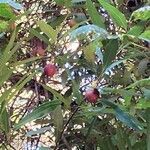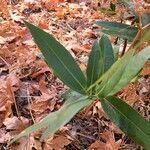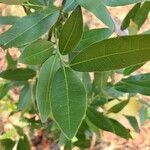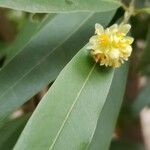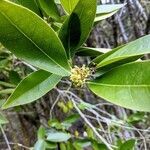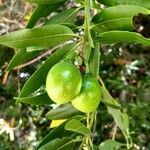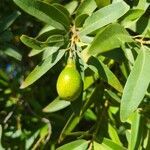Trees or shrubs , to 45 m; twigs terete, glabrous or sparsely appressed-pubescent, rarely minutely tomentose. Leaf blade deep yellow-green, shiny, narrowly oblong or narrowly elliptic, 3-10 × 1.5-3 cm, base acute or obtuse, apex acute; surfaces abaxially glabrous, sparsely appressed-pubescent or minutely tomentose, adaxially glabrous; domatia absent. Inflorescences pubescent. Flowers 5-10; tepals 6-8 mm. Drupe usually solitary, 2 cm or more diam. 2 n =24.
